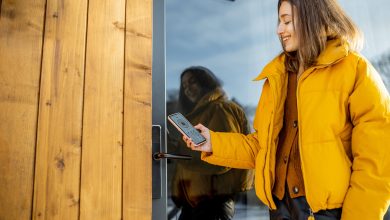
Internet connectivity, bandwidth and speed – wifi, 3G, ADSL1, ADSL2, NBN what does it all really mean to us?
In my last article I got you thinking about wifi vs Foxtel and whether you actually need Foxtel any more as guests can now bring with them their own in the form of laptops, smartphones and tablets loaded with streaming entertainment subscriptions like Hulu and Netflix.
There were numerous comments from readers in regards to the lack of bandwidth and infrastructure here in Australia to accommodate such bring your own demands. The term “third world Internet” springs to mind when I think of our Internet infrastructure, particularly where I reside on the Sunshine Coast. It is far from acceptable, especially when you are running a business that relies on the Internet!
Some of you may be fortunate enough to have the NBN rolled out in your area and will be reaping the benefits of fast and stable Internet. If you are, then I have Internet envy! I want what you are having!
Bandwidth capacity for accommodation providers can be a major issue. You can have the best wifi signal strength throughout your complex but line quality and distance from the exchange can affect your guests experience – your Internet is only as good as the pipe coming in from your Internet service provider. All it can take is one person streaming video on your guest wifi system and the rest of your guests may not be able to even get on the Internet or if they can, it may be at dial up speeds.
Question: So how do I let guests stream video so they can bring their own?
There is not one definitive answer for everyone. The NBN should fix all these issues (if it continues to be rolled out).
You can strengthen your wifi network bandwidth capacity for guests by throttling the bandwidth speeds of each user via your Internet management/guest wifi system – this will help share the pipe fairly amongst guests – however you don’t want to throttle too much and make it incapable of streaming video.
You can have numerous Internet connections coming into your complex – we have a customer that has three Internet connections for their guest wifi and they have a load balancing device for the connections; when one line gets to its limits, the next line is utilised and so forth. It has been very successful with few issues.
There are many business plans offering unlimited data these days for a small amount per month (the lowest I have seen is $50 per month), so three lines are not that expensive, however you do have the line rental every month on top of that.
Depending on the type of connection you have (ADSL1, ADSL2 and, if lucky – the messiah – NBN!) that will dictate the speed your guests will experience when on your network.
The differences between ADSL1 and ADSL2 are that the two have different download speeds. ADSL 1 download speed is limited to 8Mb and ADSL2 is limited to 24Mb. ADSL2 may ‘drop out more’ because it can be easily affected by interference, while ADSL1’s dropout rate is very small because it is less sensitive to interference and line noise.
There are so many anomalies – depending on what you have access to in your area and where you are located in regards to line quality and distance from the Telstra exchange. You may have ADSL2 but be close to the 4km border range from the exchange and only be able to get ADSL1 speeds.
Confused? Yep, I am too. Frustrated? Absolutely.
Question: So why are we even bothering to offer wifi to our guests when they bring their own 3G devices?
This is a perfectly good question I hear many times a week whilst speaking to accommodation providers. I try to explain the differences between wifi and 3G to them and generally advise the following: The main difference is the way Wifi and 3G connect to the Internet. Wifi connects to the Internet through a wireless network and has a short range. You may have guest wifi already set up or a wireless network set up at home and its range depends on your vicinity to the router(s).
3G relies on mobile phone service in the area to connect to the Internet. This means its range is a lot wider than a wireless network; however it comes at a greater cost than wifi. When using a portable device that is capable of using both wifi and 3G, such as an iPhone, unless you have turned wifi off your device should always connect to the Internet using wifi unless it is not available. If wifi it is not available or you are out of range, your device will then connect using your 3G service.
But 3G is expensive! Telstra offers 12Gb for $180 per month! Trust me on this… I know as we have no ADSL (no ports available in the area) and we are relying on Telstra’s 3G as it’s the best signal in the area. Having said that, when the 3G network gets congested (and it’s generally from 3pm every weekday when all the kids are home from school) the experience shall I say, is tortuous. Give me wifi any day… please!
So guests do bring 3G with them. Most have it on their phone or travel with a USB dongle but if wifi is available, they will choose to use it over 3G any day!
I hope you found this helpful, until next edition.

AccomNews is not affiliated with any government agency, body or political party. We are an independently owned, family-operated magazine.








Do you know of a way to stream multiple movies at the same time and deliver them to the digital TVs in the motel rooms?
Talking around 90 TVs but not all using it at once.
Do have access to Fibre to the Premises NBN – the Rolls Royce solution.
Would require COFDM to MPG 3 conversion as the TVs are too old for 4.